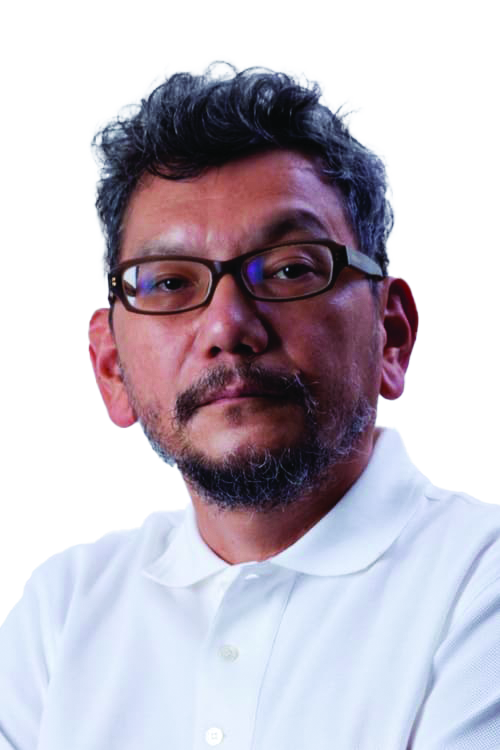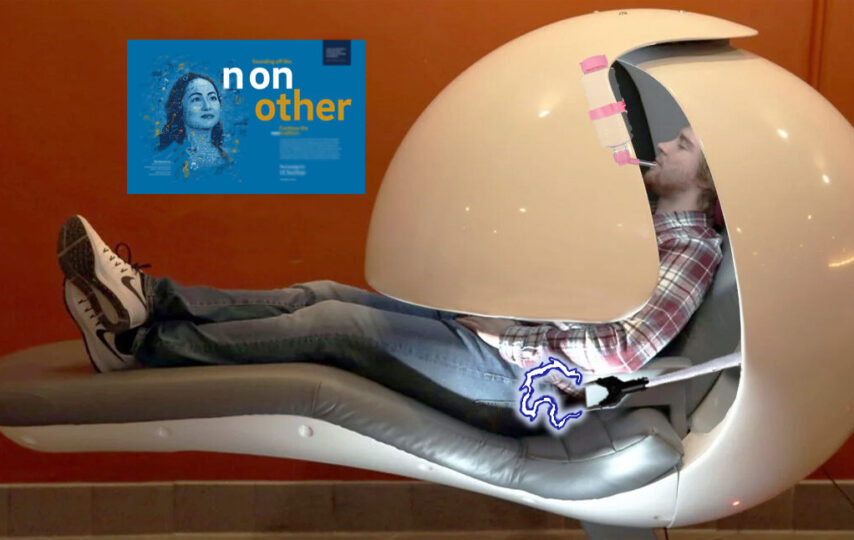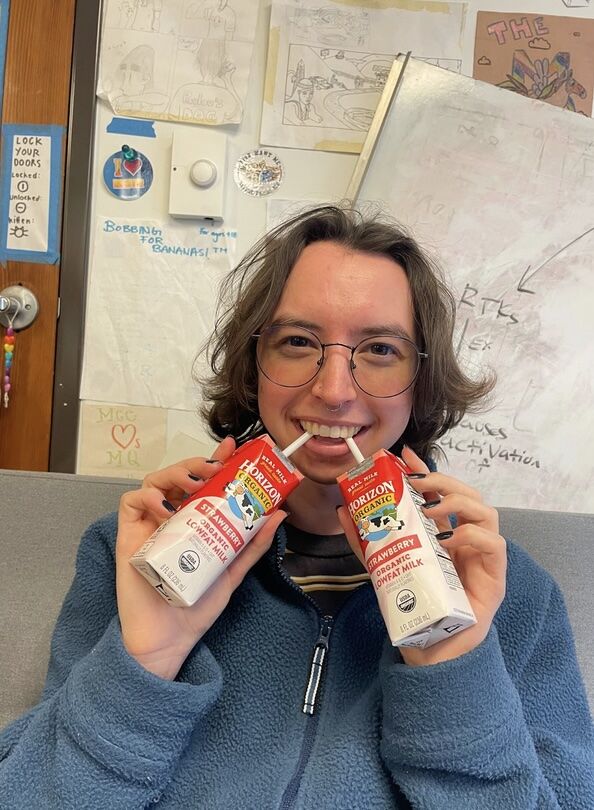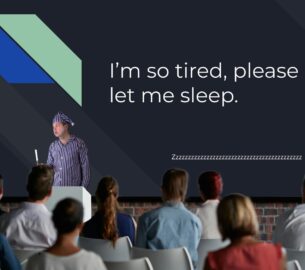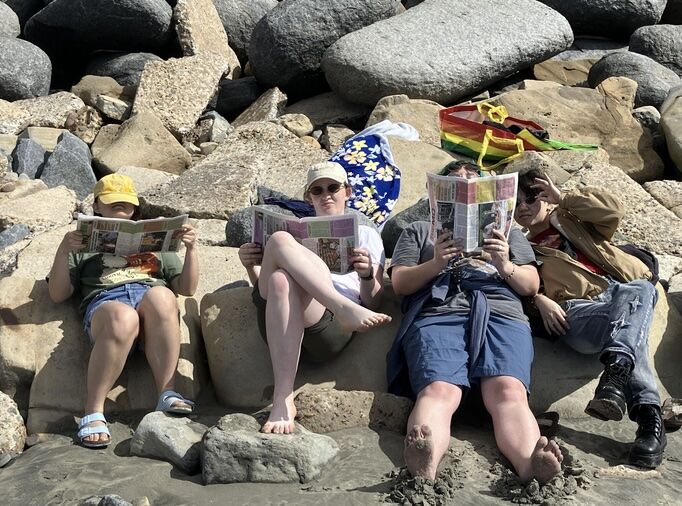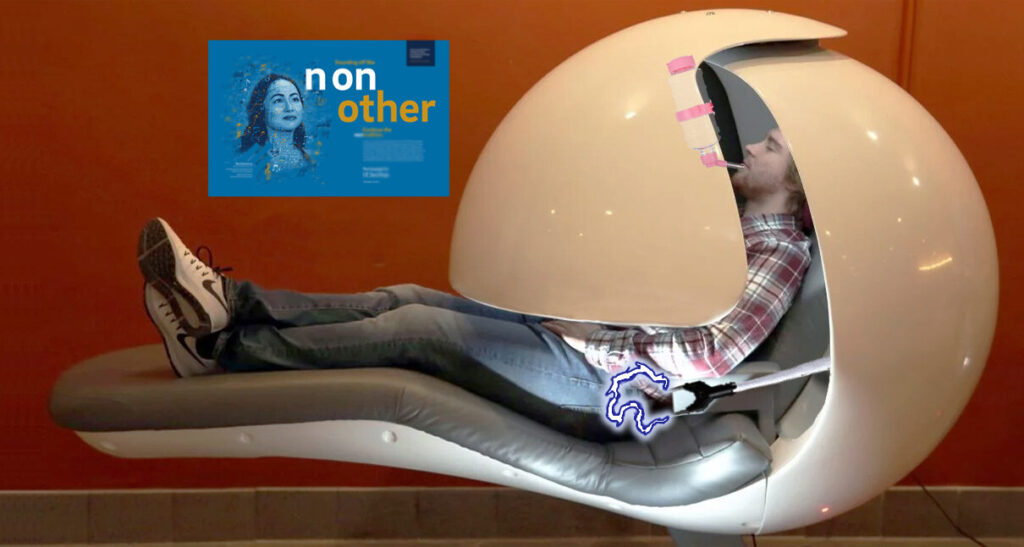
“These are apparently a part of the new study a-pod program,” said Stanly Wrighter.
Photo by Erica Rosslee
In preparation for the upcoming final exams, UC San Diego installed 12 “productivity pods” in Geisel Library to help students study. UCSD’s Student Health Administrator, Beut Strap, explained the purpose of the productivity pods. “A recent study of UCSD students’ study habits revealed most students only study for an average of 30 minutes per exam! Burnout, depression, and ADHD were among the most common reasons students listed for not being able to study for finals. These all just sound like excuses to me! How could you be burned out? I thought that only happened to my French vanilla Yankee Candles®. To help these troubled youths, we purchased these pods to help students — in the inspiring words of Kim Kardashian — ‘get their fucking asses up and work.’”
Each pod comes with features to “maximize focus and engage deeper thinking.” When students enter the pod, they must select how long they want to study, with the shortest interval being three hours and the longest being 16 hours. Students are then locked inside until the time is over. The lead engineer for the productivity pod, Bobby Bolt, attested to the integrity of the devices, stating, “These pods have been through the wringer! Even the strength of three sturdy gym bros from RIMAC did nothing to these babies!” The pods also feature chairs that deliver 100-volt electric shocks whenever they sense the user is falling asleep or not working. To maximize pod productivity, Bolt encourages students to “romanticize” pod usage by dressing up in their “best light academia outfits” while studying in the pods.
Despite the high hopes for the productivity pods, a study conducted by the Data Science Institute showed that most students actually accomplished less school work inside the pods than outside.
Furthermore, the researchers discovered that pod usage directly caused students to produce “copious amounts of fanfiction.” In the control group outside the pods, less than 1% of students wrote fanfiction over a 16-hour period; by contrast, of the test group inside the pods, over 50% of students wrote fanfiction during the same period.
Although the researchers halted the study, participants spoke out about their experiences, giving insight into this phenomenon. Second-year student and participant Stanly Wrighter noted, “I started working on my SYN 2 essay about the intersection of environmental activism and racial justice, but around the fourth hour, I was so anxious over the impending doom of humanity that I eventually started worrying about everything wrong with my life, too. Because I couldn’t leave the pod, I tried making my essay less pessimistic to calm myself down, but it eventually morphed into 204 pages of post-apocalyptic Y/N fanfiction, in which Pedro Pascal and I have to repopulate the Earth after everyone else is killed by the floods.”
In response to the questions about the pods’ effectiveness, Chancellor Khosla sent out an email to students, writing, “People do their best work in isolation. Would gravity exist if Isaac Newton hadn’t been a lonely little nerd sitting under a tree, receiving occasional stimuli to remain awake in the form of apples to the head? I don’t think so. Although I would’ve preferred converting UCSD’s parking garages into study rooms to mimic the garages that the great entrepreneurs of Silicon Valley worked out of, I was told we couldn’t do that because Elon Musk copyrighted the use of garages as think tanks. Congrats on keeping your parking spaces for now. These pods are the next best way to force people to the brink of madness and bring out the best in them.”

